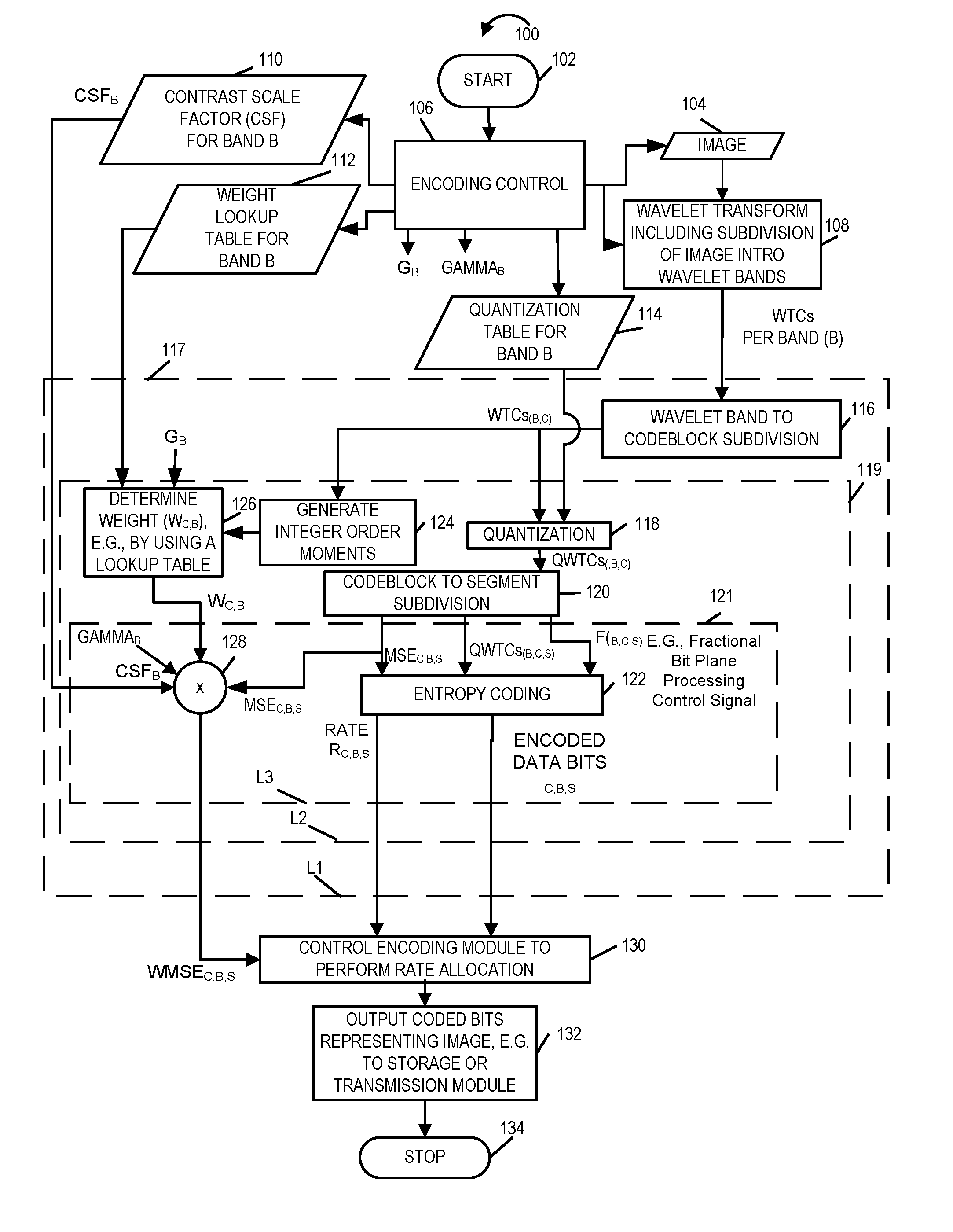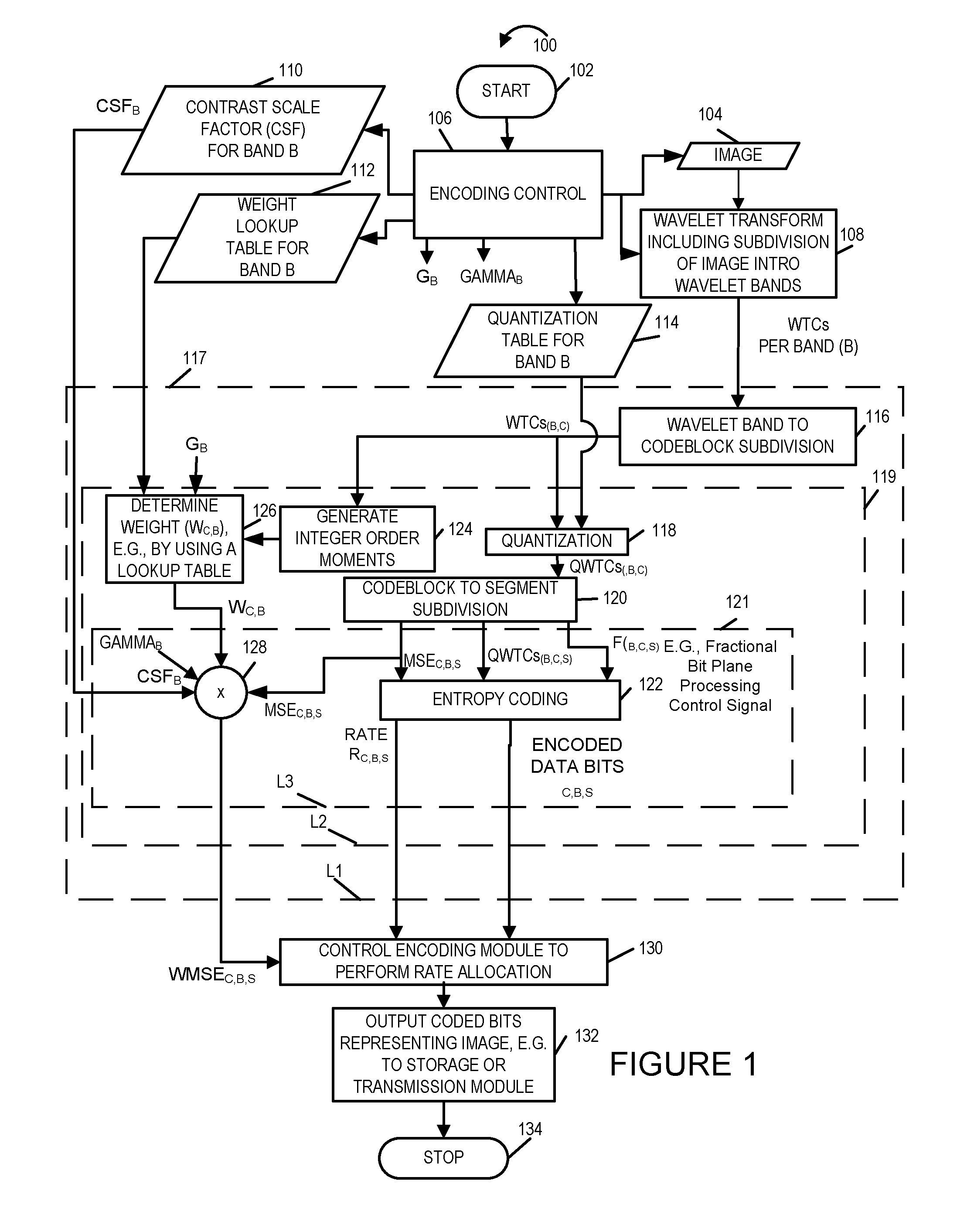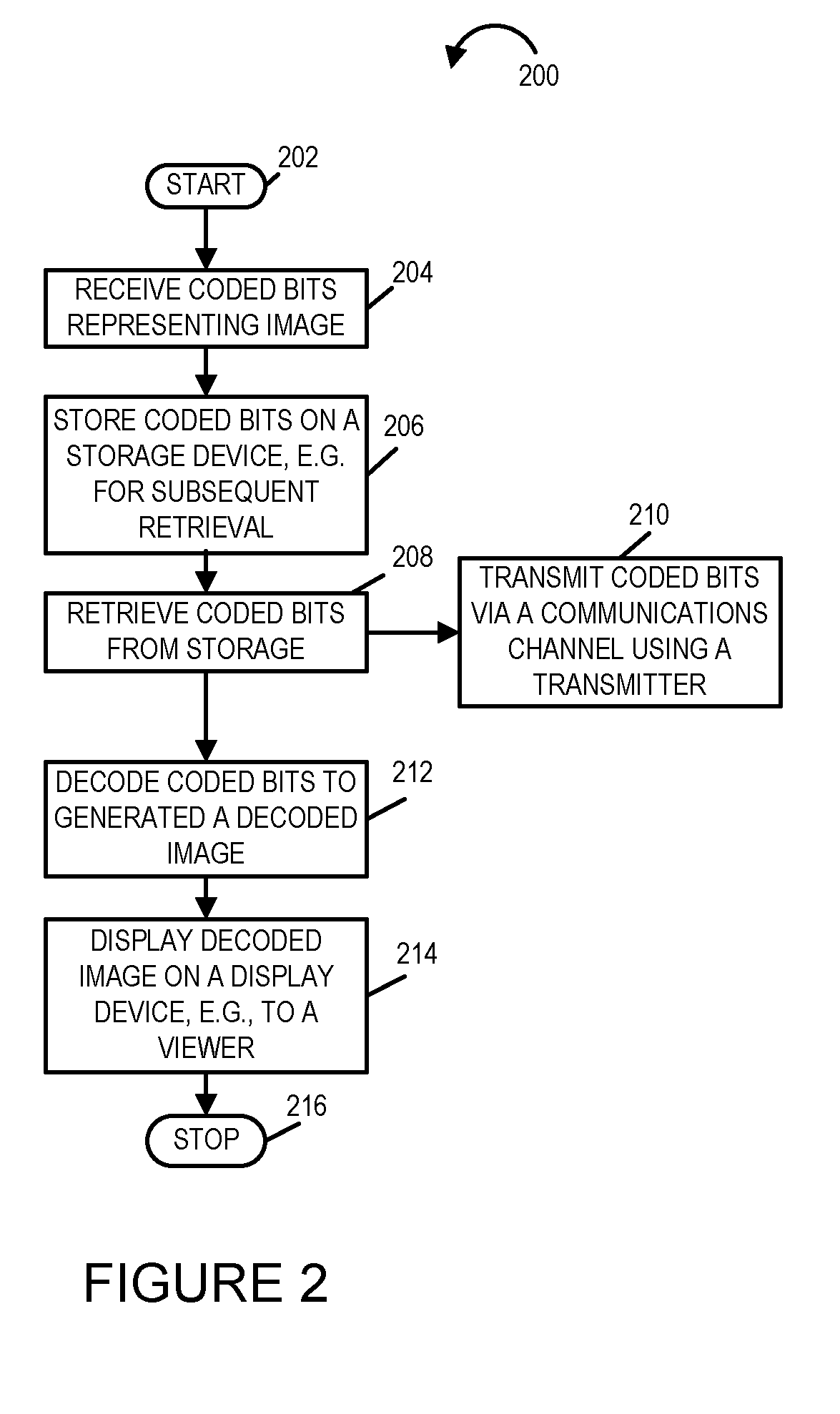Methods and apparatus for generating and using visual error weights
- Summary
- Abstract
- Description
- Claims
- Application Information
AI Technical Summary
Benefits of technology
Problems solved by technology
Method used
Image
Examples
Embodiment Construction
[0038]The present application is directed to low complexity visual masking methods and apparatus suitable for use in JPEG2000 image compression systems. In some embodiments, the visual masking techniques are implemented as part of a JPEG-2000 compliant encoder.
[0039]FIG. 1 illustrates an exemplary encoding method 100 implemented in accordance with the invention. The method is compatible with the JPEG-2000 standard. It is particularly well suited for use with gray scale images and can take advantage of variations within a codeblock with greater bit allocation emphasis being placed on less active image regions than image regions which are more active.
[0040]The method 100 begins in start step 102 wherein the system implementing the coding method, e.g., a computer system such as the one shown in FIG. 3, is initialized and one or more modules corresponding to the method 100 begin being executed by a processor used to implement the method. Operation proceeds from start step 102 to encodin...
PUM
 Login to View More
Login to View More Abstract
Description
Claims
Application Information
 Login to View More
Login to View More - R&D
- Intellectual Property
- Life Sciences
- Materials
- Tech Scout
- Unparalleled Data Quality
- Higher Quality Content
- 60% Fewer Hallucinations
Browse by: Latest US Patents, China's latest patents, Technical Efficacy Thesaurus, Application Domain, Technology Topic, Popular Technical Reports.
© 2025 PatSnap. All rights reserved.Legal|Privacy policy|Modern Slavery Act Transparency Statement|Sitemap|About US| Contact US: help@patsnap.com



